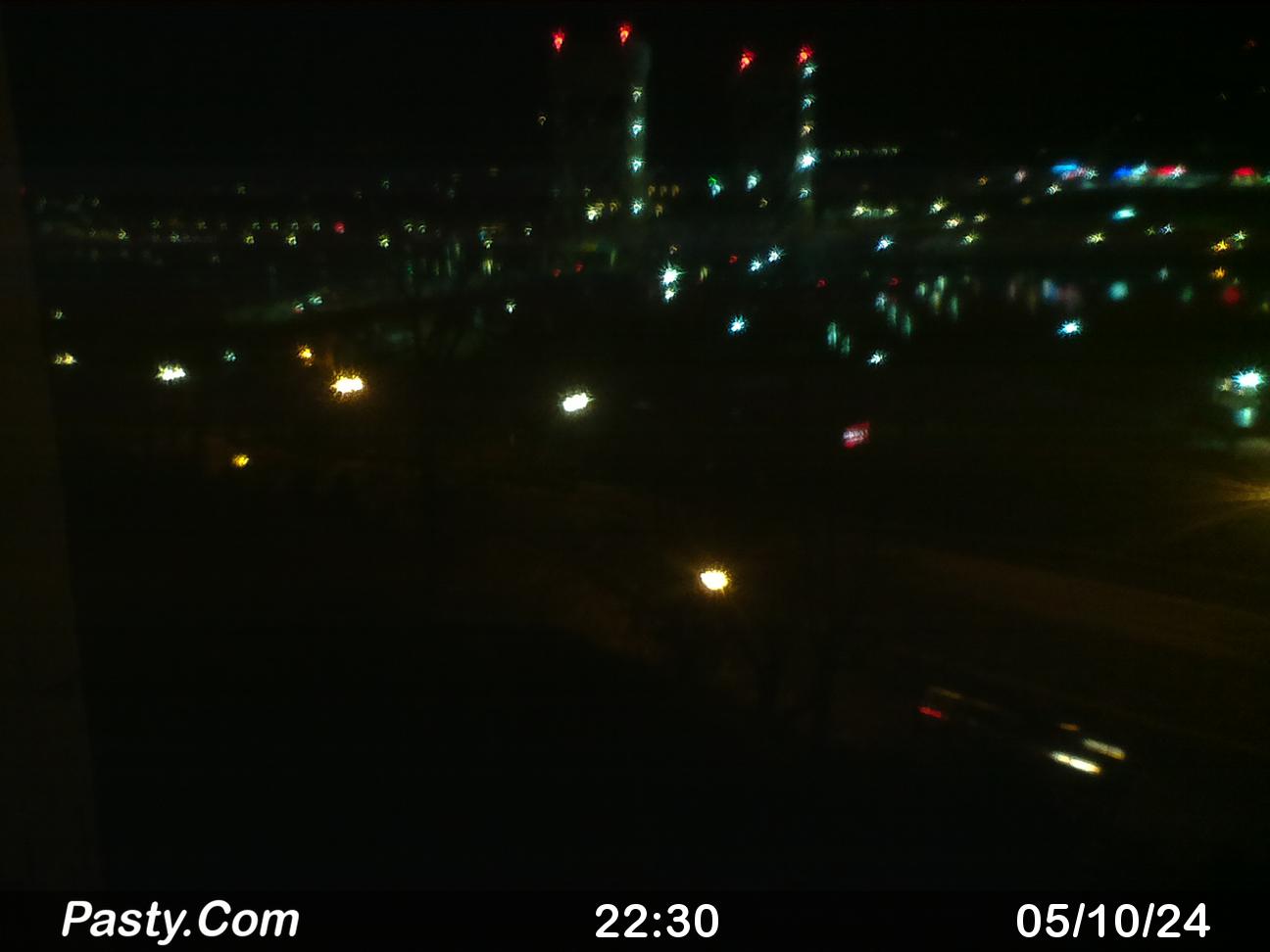
Biggest storm tonight since the night of the Edmund Fitzgerald Storm in 1975. It's a monster low pressure complex. These storms just don't happen very often but when they do you don't want to be on the Great Lakes.
Storm may beat 1975 gale that doomed Edmund Fitzgerald
10/26 - Chicago, Ill. - A storm stronger than the one that sank the freighter Edmund Fitzgerald in 1975 is expected to slash across the Midwest Tuesday whipping waves as high as 27 feet.
A line of severe thunderstorms driving wind gusts of 50 miles (80 kilometers) per hour will arrive in Chicago before 10 a.m., said Andrew Krein, a National Weather Service meteorologist in Romeoville, Illinois.
The storm will be a cyclone, with projected central pressure, a measure of its strength, forecast to be 28.35 inches. That would make it the second most severe system to strike the Great Lakes, according to the weather service.
The Edmund Fitzgerald sank on Nov. 10, 1975, in Lake Superior about 17 miles north-northwest of Whitefish Point, Michigan. The Edmund Fitzgerald storm had a central pressure of 28.95 inches. The strongest storm recorded in the lakes was the “Great Ohio Blizzard” of January 1978, which had a central pressure of 28.05 inches.
The pressure at Duluth Tuesday bottomed out at 28.35 about 11:30 a.m. On vessel on lower Lake Michigan reported a wind gust of 108 Mph and pressure was reported at 28.33.
In comparison, when Hurricane Earl reached Category 3 strength in the Atlantic at the end of August, its central pressure was recorded at 28.20 inches.
Great Lakes cyclones aren’t like hurricanes, however, Krein said. The storms gather their energy from the Jet Stream and the upper atmosphere, while hurricanes draw their power from warm ocean waters and have the strongest winds wound tightly around the core.
Krein said the storm also isn’t likely to produce a lot of rain. Aside from the heavy thunderstorms that arrive with the first blast of wind, the weather will be drier and breaks may appear in the clouds.
The blue sky shouldn’t deceive anyone, he said. The storm will last at least two days and will cause a problem for ships.
In advance of the storm, the weather service has issued a high wind watch from South Dakota to Ohio. A watch means sustained winds of as much as 40 mph are possible. In addition, a high wind warning, meaning gusts of 75 mph are possible, has been issued for parts of northern Illinois and Wisconsin, according to the weather service.
Open lake forecast for the region are included below:
Lake Superior
Storm warning Tuesday afternoon through Wednesday, winds building to 55 knots, waves 22 - 27 feet.
Off Duluth - Superior the American Century and Edgar B. Speer were anchored.
In the upper St. Marys River in Waiska Bay - CSL Laurentian, James R. Barker and Burns Harbor in Rabar Bay, American Mariner in Pendills Bay, St. Clair in Goulais Bay. James R. Barker departed upbound around 3:30 p.m. American Integrity was heading east bound hugging the upper peninsula of Michigan. In the lower St. Marys - Lee A. Tregurtha, Buffalo, Karen Andrie, Kaye E. Barker, Paul R. Tregurtha, Palau and Algocape. Michipicoten was tucked in behind St. Joseph Island off Bruce Mines and Algorail behind Drummond Island. In the Straits west of Mackinaw City - Alpena and Philip R. Clarke. Around Bois Blanc Island below the Straits - Wilfred Sykes, Robert S. Pierson, Samuel de Champlain, Algomarine, Joyce L. Van Enkevort. Frontenac departed Port Dolomite about 3 p.m. heading for the anchorage off Detour, the Sykes left the anchorage and headed into load. Federal Power was in Hammond Bay just north of Rogers City. Calumet came through the Straits east bound about 5 p.m. and continued on downbound.
Bloomberg News Service




No comments:
Post a Comment